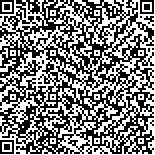| 摘要: |
| 根据国内外最新文献,详细介绍了有害赤潮数值分析的各种方法,包括多元统计分析和赤潮生态数学模型,综述了多种统计方法在分析提取有害赤潮发生主要诱因及判别赤潮发生与否中的应用,评述了最近发展起来的赤潮生态模型,总结了各种数值方法反映的赤潮不同侧面,并对不同方法在实践应用中存在的问题进行了探讨。 |
| 关键词: 赤潮 多元统计分析 赤潮生态模型 |
| DOI: |
| 分类号: |
| 基金项目:国家自然科学基金资助项目,39790110号 |
|
| A REVIEW OF HARMFUL RED TIDE NUMERICAL ANALYSIS |
|
HUO Wen-yi,HAO Jianhua,YU Zhi-ming,LI Quan-sheng
|
|
Institute of Oceanology, The Chinese Academy of Sciences,Qingdao, 266071
|
| Abstract: |
| Red tides or harmful algal blooms (HAB) are becoming progressively serious in global seas with negative effects on marine fishing resources, mariculture and human health. Numerical analysis is an important tool in studying the dynamic processes of environmental factors affecting red tides, revealing the causes of red tides, analyzing the mechanism of red tides and forecasting their occurrence.
In the past few decades, multi-variance statistical methods have been applied to analyzing the inter-relationships between biological, physical and chemistry factors. Commonly used methods include Principal Component Analysis, Regression Analysis, Interpretive Structural Modeling (ISM), Cluster Analysis, Discriminant Analysis and Time Series Analysis. Of these methods, Stepwise Cluster Analysis and Time Series Analysis were established recently and have been applied for the South China Sea region.
As an improvement in red tides research, the important roles of physical causes for the occurrence of red tides have been recognized. In recent years, lots of ecology mathematical models of red tides have been developed to study the coupling action of physical and biological causes. Generally speaking, an ecology mathematical model of red tides mainly consists of a biology sub-model, a chemistry sub-model and a physics sub-model. Some problems of model application (including selection of model parameter, type, dimension, coupling and data) are evaluated in detail.
Up to now, the ecology mathematical model of red tides has achieved success in varying degrees in describing the various dynamic factors, but it cannot solve some problems such as the competing mechanism of phytoplankton population and the prediction of red tides. In the future, the development of ecology mathematical models of red tides will depend on the progress in physiological and ecological research and the data collecting techniques. The coupling model of biology-physics-chemistry will be an important direction in future red tide numerical analysis. |
| Key words: Red tide, Multi-variance statistics analysis, Red tide ecology model |
